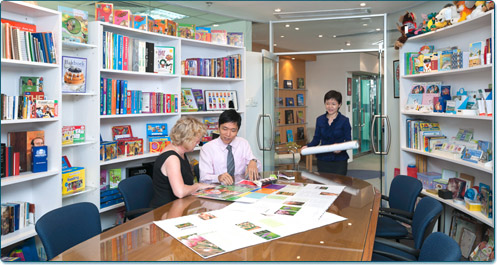


At Colorcraft, we believe that effective client
service encompasses advice as well as implementation. We assess each
project not only on the basis of its complexity and production
schedules, but on its viability. We take a 360-degree view on the
implications for clients of their particular projects, whether it
involves cost-effectiveness, or regulatory matters. This may mean that
we raise issues concerning design, perhaps because it may impact on
shipping costs later down the track, or there are potential problems
with safety on a multi-component project.
We are acutely attuned to identifying for all our clients, but
particularly for small and medium-sized companies, solutions to design
and production problems that lead to better quality end-products and
that are frequently more cost-effective.
Each project we undertake has its own set of parameters that we must
meet. However, to obtain a better picture of the way in which we
approach our solutions-based service, the following are examples of
actual problems that have occurred, and the approaches we have taken to
find acceptable resolutions. We have obtained permission from clients
to use the following examples.
-

Problem:
Our client's designer had executed a brief to produce a box with a curved lid to resemble a treasure chest.
-
CC Perception:
Although the idea for the packaging design was sound, we identified a potential problem following production. A curved lid would have required special packaging for shipping, increasing the cost not only of production but also of shipping. In effect, our client would have been shipping air as well as product. Additionally, the boxes would have been very difficult to display in stacked form at point of sale or use.
-
Solution:
We suggested a flat top lid, although the graphics for the box still showed a treasure chest. A later design for the box to be a schoolhouse was resolved at the outset by designing a moulded "roof" lid, which still has a flat expanse.
-

Problem:
Our client's product – a boardgame – was of a conventional size for such products. Costs of production needed to be carefully managed.
-
CC Perception:
We were concerned not just about containing the costs of production but also about the domino effect this would have on shipping costs and warehouse storage space on delivery, at point of sale and use.
-
Solution:
We recommended that the board be folded to quarter its normal size, although we consulted specifically on the potential negatives that might result with the end-users. Given the go-ahead, the shape of the game box was reduced significantly, saving on costs of material, and shipping costs and warehousing were also minimised.
-

Problem:
Our client's product called for a velcro fastening to secure the contents. In consultation at pre-production, we learned that the product was intended to for heavy use over a long period of time.
-
CC Perception:
We could see that the velcro strip would not withstand such heavy use and would eventually either cease to close properly or would come away from the backing.
-
Solution:
We recommended to our client the use of a magnetic fastening instead, which would not be subject to the same wear and tear as velcro.
-

Problem:
Our client's book was an unusual size.
-
CC Perception:
Looking at the specified sheet size, we could see that there would be a considerable amount of paper wastage leading to unnecessary additional costs, as well as being environmentally unfriendly.
-
Solution:
We recommended a paper of equivalent quality, but a different sheet size, which would keep trim to a minimum, costs controlled and the environment a little safer.
More information on standard paper size and weight conversions.








